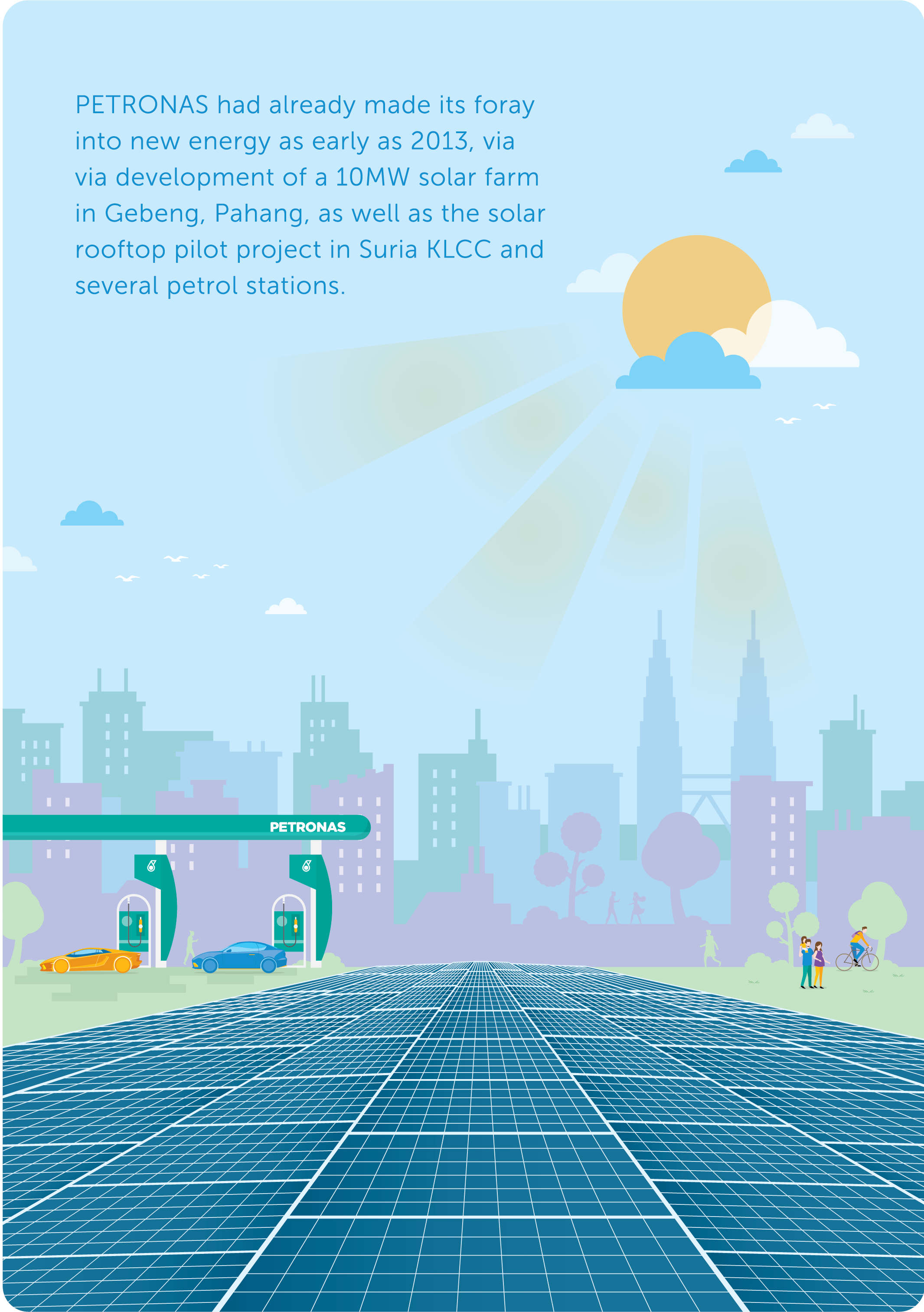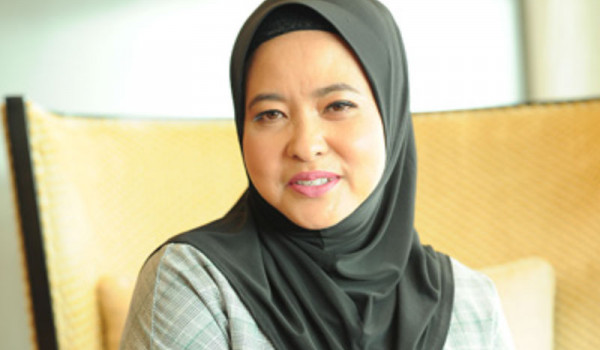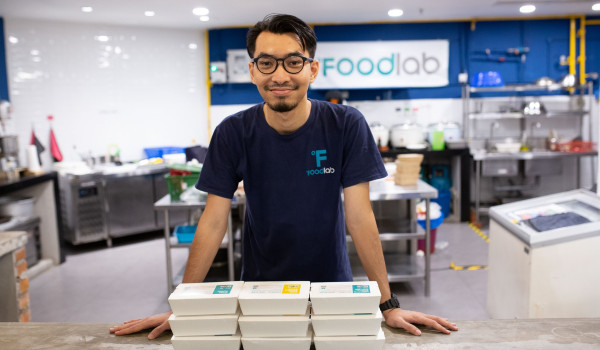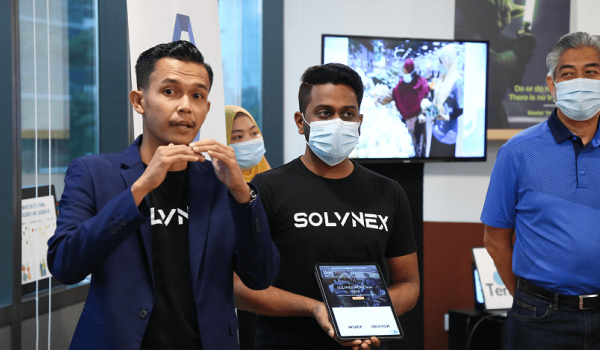The world (as we knew it) juddered to a halt three months into the year that still defies definition. The ensuing lockdowns and strict social measures have yet to end. Almost all economic sectors worldwide are still reeling from the ravages of the COVID-19 health crisis, as second quarter GDP contractions reveal.
03/11/2020 • 6 mins read
Building on Renewables
In this time of great uncertainty, the COVID-19 pandemic is accelerating a reset for cleaner energy.
Jacqueline Pereira

In mid-August, Malaysia’s Statistics Department announced that GDP had contracted 17.1 per cent, down from 0.7 per cent growth in the last quarter. This was the lowest figure since the 1998 financial crisis. In related news, International Energy Agency (IEA) reports that global energy demand dropped to precipitous levels not seen in 70 years. Meanwhile, the World Economic Forum (WEF) estimates that overall energy demand contracted by 6 per cent, oil demand is expected to drop 9 per cent and coal 8 per cent this year.
Still, there is a silver lining to the storm clouds we have witnessed so far. The world experienced a record decline of carbon emission of almost 8 per cent resulting from the worldwide lockdown during the first quarter of 2020, according to the WEF.
Additionally, this pandemic has accelerated a reset for cleaner energy.
While fossil fuel consumption contracted, renewables are expected to defy this trend. The IEA’s Global Energy Outlook 2020 estimates that the total global use of renewables will increase by 1 per cent and the expansion of solar, wind and hydro power is expected to help renewable electricity generation to rise by nearly 5 per cent in 2020.
Though growth is smaller than what was anticipated before the crisis, it shows the resilience of renewables and provides an indication on the way forward.


“The government recently made an unprecedented move of issuing a 1GW tender, making it a milestone in the history of renewable development in Malaysia, extending green economic recovery as part of its policy.”
Dr Jay Mariyappan
Head of PETRONAS New Energy
Clean Investment
Dr Jay Mariyappan, Head of PETRONAS New Energy views the current disruption more as an advantage. He, too, expects the post-pandemic situation to increase demand for renewable energy, as solar solutions have become sufficiently cost-competitive. On the other hand, governments across the globe now earmark the new green energy sector as a key element in reviving the economy, targeting clean energy and green innovation as part of stimulus programmes.
In June 2020, a Wall Street Journal article reported that the world’s top 50 economies were financing a USD583 billion boost to green efforts. According to the IEA, green business growth and cost reductions in renewables technologies offer more economic opportunities today than a decade ago. Other emerging technologies such as batteries and hydrogen are also ready to scale up. This, in turn, increases access to electricity - which 860 million people worldwide still lack - and boosts energy security.
Renewable energy is not a new phenomenon, having been in use for centuries. Yet through technological innovations, modern-day versions are not without challenges. Despite global crises and other setbacks, the enduring industry has always bounced back strongly from prohibitive costs and high investment through strong government support and community buy-in. “The industry has had to constantly innovate - and very significantly,” states Dr Jay.
PETRONAS’ formation of the Gas and New Energy (GNE) business testifies to its commitment to provide cleaner energy solutions. It is now functioning as a one-stop centre, through advocacy, market development and innovative solutions. In 2019, the division reported 600MWp of solar capacity under operation and development. PETRONAS had already made its foray into new energy as early as 2013, via development of a 10MW solar farm in Gebeng, Pahang, as well as the solar rooftop pilot project in Suria KLCC and several petrol stations.
The government recently made an unprecedented move of issuing a 1GW tender, making it a milestone in the history of renewable development in Malaysia, extending green economic recovery as part of its policy, says Dr Jay. In 2018 the Energy, Science, Technology, Environment and Climate Change Ministry had set a target of 20 per cent of the country’s electricity to be generated by renewable sources by 2030. The end of that year, the initiative recorded a 2 per cent achievement. Although many initiatives exist, from net metering to feed-in tariffs for small hydro, biogas and biomass plants, the pace of development now needs to increase.
In the meantime, additional deregulation measures could help the renewables sector grow at a faster pace. Although renewable energy is heralded globally, it will have to compete with other energy sources. Connectivity and delivery of renewable energy will become greater with power sector reforms to encourage Malaysia’s renewables growth. What is limiting this growth now is partly the supply variability and the grid’s ability to match supply and demand.
“Most countries are undergoing, or at least thinking of some type of deregulation. And the aim is to provide more competitive pricing,” affirms Dr Jay.
“So that everyone benefits from a country standpoint, utilising their resources and are in accordance with the Paris Agreement targeted emissions.” Increasing Asia-Pacific energy demand will require more growth and scale, as is the case in Europe where large offshore projects are being developed. Therefore, Dr Jay deems renewable growth to be potentially huge, especially solar and wind. But the challenge will be to deploy and aggregate at scale.


“Aggarwal believes that the coronavirus health crisis has increased awareness of renewables in many countries, and strengthened their commitment to clean energy”
Solar Energy
In April 2019, marking its international foray into renewable energy, PETRONAS acquired solar energy company Amplus Energy Solutions Pte Ltd (Amplus) with a portfolio of distributed, renewable energy assets with a strong presence in India, expanding to Dubai, Thailand and Vietnam.
The coronavirus health crisis, declares Sanjeev Aggarwal, Amplus Managing Director and Chief Executive Officer, has increased awareness of renewables in many countries and strengthened the commitment to clean energy. Led by solar PV, renewable power capacity was set to expand by 50 per cent between 2019 and 2024, according to the 2019 IEA market analysis on renewables.

Published in May, the "Global Energy Outlook 2020: Energy Transition or Energy Addition?" report reveals that the levelised cost of solar PV power has declined by nearly 90 per cent since 2009. Over that time, global solar electricity production has grown more than tenfold. Solar energy has grown from supplying less than 0.01 per cent of the world's electricity in 2008 to more than 2 per cent in 2018. By 2040, it projects that solar will provide over 20 per cent of the world's electricity.
India has also been resolute in its deployment of solar energy to meet rising energy demands. The nation has already achieved its 20GW four years ahead of schedule, with 37.6GW already installed, and plans to target 100GW of solar capacity by 2022. With government subsidy efforts and falling solar panel prices, the solar adoption rate has surged.
In recent years, India's renewable energy sector has expanded exponentially. Between 20 and 25 per cent of Indian energy usage today is renewables.
The country has been improving its energy security by decreasing fossil fuel dependency and delivering climate-change mitigation solutions. Aggarwal is certain that renewables will continue to progress and sees the energy cycle as an ecosystem where all complementary sources of energy work together to meet demand.
In aligning with PETRONAS' push for cleaner energy, Aggarwal feels that they are going in the right direction because consumers now demand cleaner energy. Amplus is also diversifying into new avenues such as solar plus storage, energy efficiencies, electric mobility and residential solar.
Forging Forward
In the future, one of the biggest challenges Aggarwal foresees is solar storage, and Amplus is eager to get ahead here in its research to further the transition to renewables. This means spending more on R&D, reducing costs further and promoting the space so that economies of scale can increase.
Adds Dr Jay, "Storage works by storing electricity when the price is low or when there is access and selling it when the price is high or when there is a shortfall." Storage including batteries has been implemented in some parts of the world and is particularly viable where markets have a pricing signal for the time-of-use of energy. "We're working to understand how the technology can be integrated at the customer side of the meter (behind the meter) or with the grid (front of the meter), as the solar and wind source of energy is variable in supply."
In the next five to ten years, Aggarwal expects to see a sharp decline in the usage of coal plants and a surge of very different energy sources like hydrogen and fuel cells, aided by storage technology. Another challenge he sees in the near future relates to supply chain disruption across the world, exacerbated by the pandemic. This can come either from transport and movement restrictions or from nationalists calling for trade barriers.
In focusing on growing its business and regional opportunities, GNE has embarked on a series of initiatives.
In July this year Tesco Stores (Malaysia) Sdn Bhd and NE Suria Satu Sdn Bhd (NESS) entered into Malaysia’s largest long-term power purchase agreement (PPA) for solar energy. NESS, a collaboration between PETRONAS New Energy and NEFIN Group, a regional bespoke solar developer and asset management group. Under a 20-year agreement, the PPA’s first phase will see installation of solar photovoltaic (PV) panels on the rooftop spaces of 15 Tesco stores in Northern and Central Peninsular Malaysia. With installation expected to be completed in October 2020, the solar PV panels will collectively generate about 18GWh of clean energy annually, thus preventing approximately 13,624 tonnes of carbon emissions into the atmosphere.
In the same month, PETRONAS invested in a solar PV system start-up, SOLS Energy Sdn Bhd, that focuses on Malaysian residential and small-to-medium enterprise (SME) sectors. It also runs Malaysia’s first Solar Academy, offering technical skills in the solar industry and personal development training to local youngsters.
They have also been expanding PETRONAS' SINARAN (Solar Installation and Application on PETRONAS Rooftops & Assets Nationwide) programme. The company is also in the delivery process for Malaysia Marine and Heavy Engineering Holdings Bhd (MMHE), Universiti Teknologi PETRONAS (UTP), PETRONAS Refinery and Petrochemical Corporation (PRPC), Institut Teknologi Petroleum PETRONAS (INSTEP), and selected PETRONAS Dagangan Bhd (PDG) services stations nationwide, with a total capacity of almost 100MW of solar power.
While the economic devastation inflicted by COVID-19 was swift, large-scale and far-reaching, the ensuing global health crisis offers a transformative lease for accelerating the clean energy transition in the power sector.
The PV panels on the rooftop spaces of 15 Tesco stores in Northern and Central Peninsular Malaysia, will collectively prevent 13,624 tonnes of carbon emissions into the atmosphere.







